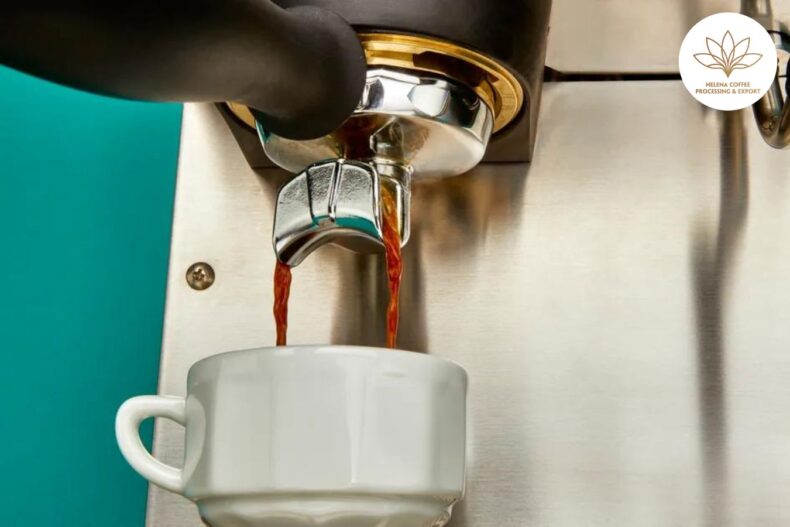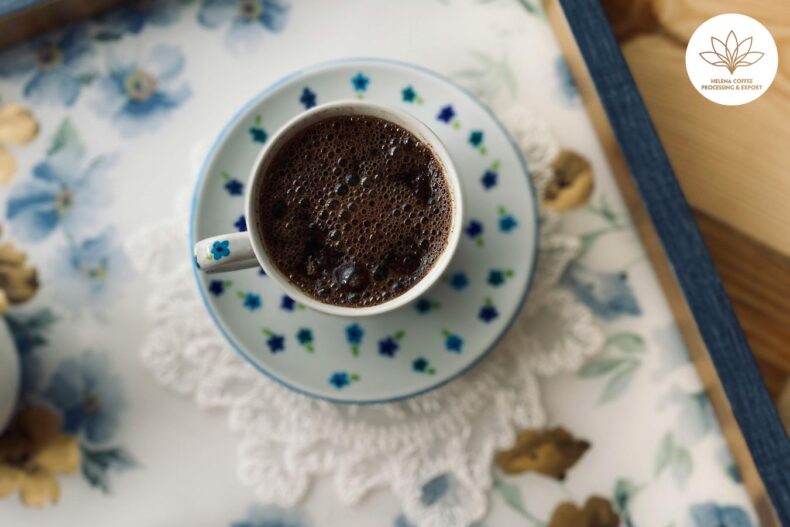
Prevent clumping when grinding coffee: Preparing high-quality espresso requires accounting for numerous variables – dose, yield, extraction time, grind size, tamping, distribution, and more. However, even considering all these factors, if your shots still don’t taste quite right, the issue could be clumping.
Coffee clumps can form for various reasons and lead to channeling, negatively affecting extraction. To get the best results from your coffee, it’s essential to reduce clumping as much as possible.
To understand how clumping happens and how to prevent it, I spoke with two coffee professionals. Read on to learn more.
You may also enjoy our article discussing the Weiss Distribution Technique and whether to use it before tamping. Even with meticulous technique, clumping can undermine espresso quality, so it’s critical to address.
WHAT CAUSES CLUMPING?
Here is one way to rewrite the paragraph to improve flow and clarity:
Simply put, clumping often occurs when grinding coffee for espresso. As Ramon Heinzer, owner of ZHH Gastro restaurants in Zurich, says, “When grinding for espresso, you need to grind as finely as possible.” However, grinding so finely can sometimes cause the grounds to clump together.
 What causes this clumping? According to Daniele Colizza, designer of the Grindie SOLO grinder, “Clumping can be caused by excessive coffee oils, issues with ground flow from the grinding chamber, or static electricity from grinding.”
What causes this clumping? According to Daniele Colizza, designer of the Grindie SOLO grinder, “Clumping can be caused by excessive coffee oils, issues with ground flow from the grinding chamber, or static electricity from grinding.”
Oily beans like dark roasts or stale coffee can clog the grinder and leave oils on the burrs, leading to clumping. High humidity and heat can also cause grounds to stick in the chute, blocking flow and causing clumps.
Finally, coffee beans can pick up electrical charges passing through the burrs. Since ground coffee lacks moisture, this static charge can make particles stick together or to surfaces. In summary, oils, ground flow, and static electricity during fine espresso grinding can all contribute to problematic clumping.
WHY DOES CLUMPING CAUSE PROBLEMS?
Here is one way to rewrite the paragraph to improve flow and clarity:
While clumping may seem insignificant, it can greatly impact espresso extraction. As Daniele explains, “Water always takes the path of least resistance through the puck. Clumps are densely packed, so water can’t flow through easily.”
Instead, water is forced through less dense areas, causing channeling. This leads to several issues, as Ramon tells me: “Channeling affects the flavor and mouthfeel of your espresso. It can become more watery and lack flavor.”
Essentially, channeling means parts of the puck are underextracted while others are overextracted. This results in espresso tasting simultaneously bitter and sour, failing to bring out the best flavors.
Moreover, clumping is inconsistent, making it hard to predict. “Clumps vary in size, amount, and density, so they’re challenging for baristas to deal with,” says Daniele. In summary, clumping causes channeling and unpredictable extraction issues that undermine espresso quality.
SO, HOW CAN YOU PREVENT IT?
Here is one way to rewrite the paragraph to improve flow and clarity:
There are some measures you can take to reduce clumping. First, check your grind size. Although espresso requires a very fine grind, going too fine increases clumping. Slightly coarser grinding may help.
Similarly, keeping your grinder clean and well-maintained is essential. Regularly removing old grounds and oil buildup minimizes clumping.
However, these can only do so much. For consistently good results, invest in a high-quality grinder.
“Grindie’s patented system works to reduce clumping,” Daniele explains. “The Grindie SOLO’s Double Clump Crusher and temperature control adapt to different ground flow conditions.
“This is because two membranes in the chamber create more movement in the chute,” he adds. “Different-sized particles distribute more evenly and pass through easily.”
“Additionally, the low RPM engine minimizes heat and static buildup,” says Daniele. In summary, Grindie’s innovations in grinding technology and temperature control help address the issue of clumping.
Benefits of mitigating clumping
Here is one way to rewrite the paragraph to improve flow and clarity:
In effect, more even particle distribution and less static from the Grindie system means less clumping occurs. This allows for more even extraction and the full flavor spectrum to come through.
As Ramon tells me, “The Grindie SOLO also produces consistent results. With 12 employees at ZHH Gastro, consistency can be a concern, but the grinder eliminates human error.”
Moreover, he says gravimetric grinders like Grindie give more consistently accurate doses, typically within 0.1g.
Both Ramon and Daniele agree high-quality grinders like Grindie reduce workload for baristas by minimizing clumping. This means less manual dispersing and breaking down of clumps in the portafilter.
In summary, by addressing the causes of clumping through innovative technology, the Grindie system allows baristas to achieve optimal and consistent extractions, bringing out the best in the coffee.
TIPS ON HOW TO MANAGE CLUMPING
Here are a few ways I would suggest managing coffee clumping as a barista:
Clumping can indicate your grinder is heating the coffee excessively, so check that the burrs, dispensing system, and any anti-clumping features are working properly. Try changing grind size and noting when clumping occurs. Pay attention to the temperature of each dose.
If you notice high temperatures during clumping, look for ways to reduce heat in the grinder. Ramon switched to the Grindie SOLO for this reason. Some grinders lack cooling systems, and overheating can degrade coffee flavor and aroma, especially when grinding large volumes.
Besides temperature, maintain the grinder by cleaning the burrs and chamber regularly to prevent buildup contributing to clumping. When dispensing grounds, distribute and break up clumps as needed for an even extraction. Clumping takes extra work, but staying on top of grinder maintenance and Grounds prep will help minimize issues.
Reducing static
Here are some suggestions for reducing static and clumping when grinding coffee:
If static seems to cause clumping, try the Ross Droplet Technique (RDT). This involves adding a few drops of water to the beans right before grinding. To do this:
- Run the handle of a teaspoon under water briefly so droplets cling to it
- Stir the wet spoon handle through the coffee beans – just a few drops is enough

Ramon also recommends using beans 2-4 weeks after roasting, as very fresh beans contain more carbon dioxide that can hinder extraction.
Additionally, assess the humidity in your environment. Depending on conditions, opening/closing windows or using a humidifier/dehumidifier may help minimize clumping.
The key is just a little moisture – too much water will oversaturate the grounds. With some small adjustments, you can reduce static and get a clump-free grind. Let me know if you have any other questions!
Tamping and distribution
Beyond issues with your grinder, you also need to use proper tamping and distribution techniques to stop clumping from occurring.
In simple terms, tamping is when you apply force to ground coffee in a portafilter basket, which makes the puck compact. However, if you tamp unevenly, or tamp a coffee bed which contains clumps, this can negatively affect extraction.
To avoid uneven tamping, many coffee professionals recommend using some kind of distribution techniques. One of the most common methods is the Weiss Distribution Technique, which involves stirring the ground coffee to break up any clumps.
FAQS:


